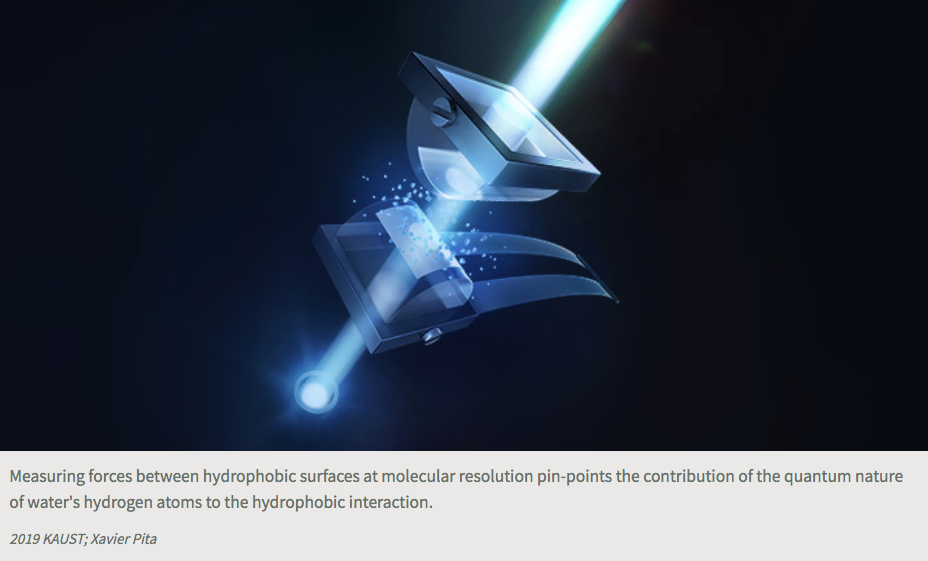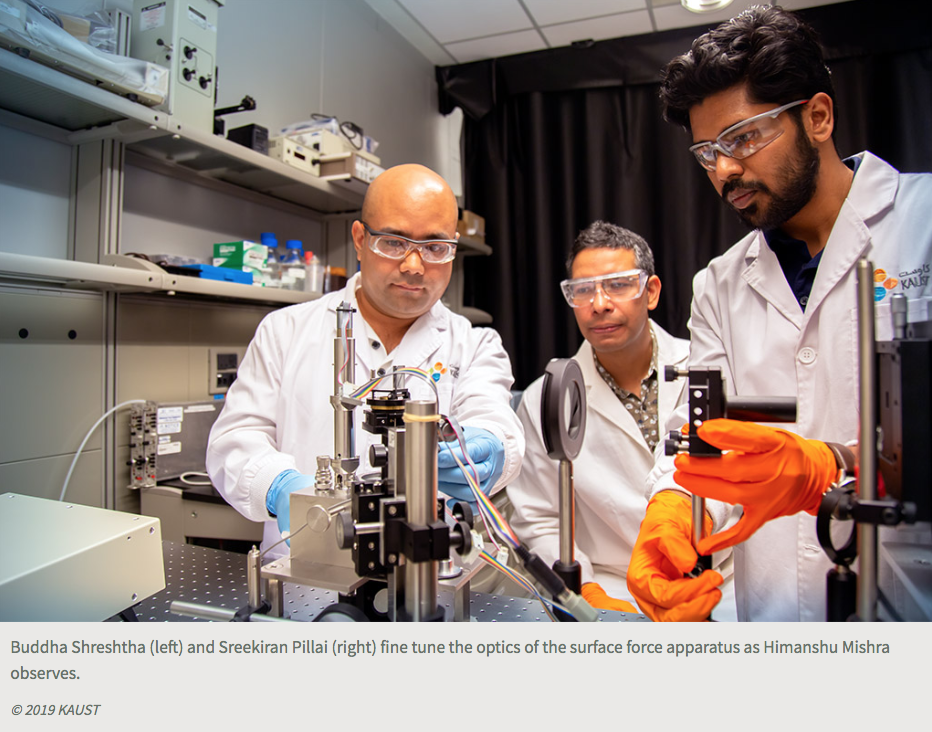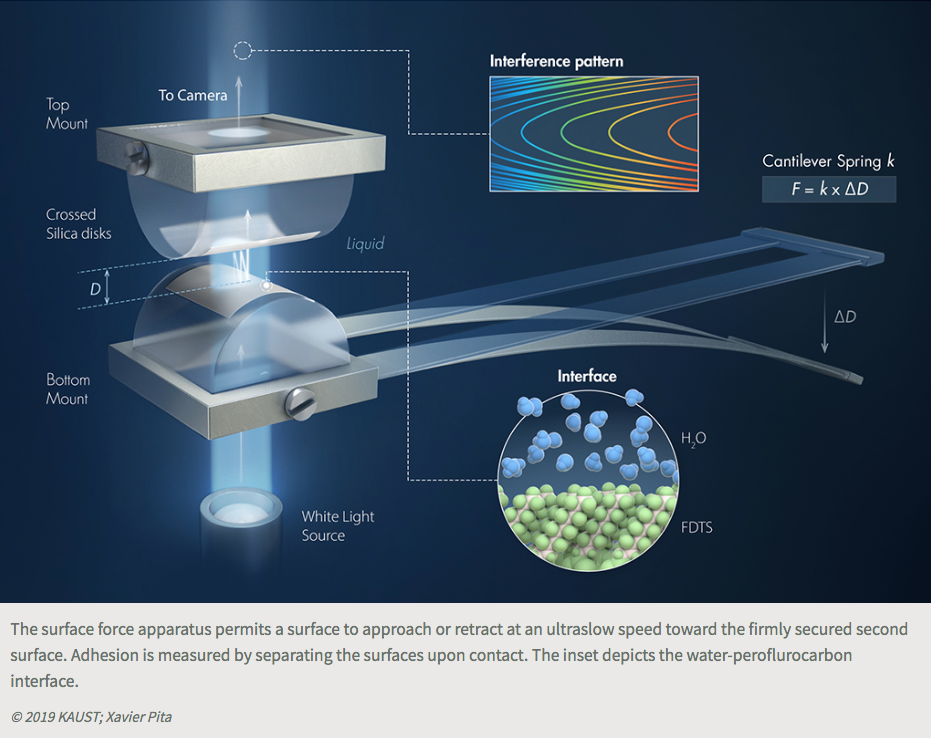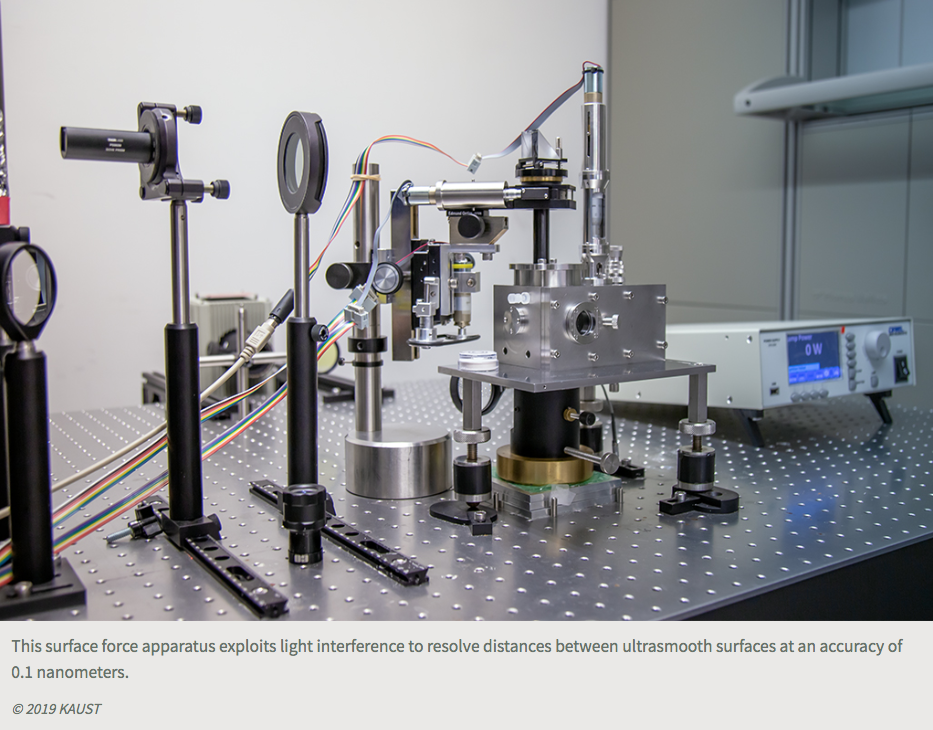


19 September, 2019


In the early 1980s, researchers first noted an unexpected effect when two hydrophobic surfaces were slowly brought together in water. “At some point, the two surfaces would suddenly jump into contact—like two magnets being brought together,” says Himanshu Mishra from KAUST's Water Desalination and Reuse Center. Mishra’s lab investigates water at all length scales, from reducing water consumption in agriculture, to the properties of individual water molecules.
Researchers were unable to explain the phenomenon at the molecular level, so in 2016, Mishra organized a KAUST conference on the subject. “We brought together leaders in the field—experimentalists and theorists—leading to intense debates on the understanding of hydrophobic surface forces,” he says.

Part of the challenge was that the hydrophobic interaction is unique to water. “Gaining insights through other liquids or adding cosolvents to water is not feasible: the interaction is dramatically reduced or lost,” explains Buddha Shrestha, a postdoctoral researcher in Mishra’s lab.
Inspired by the conference, Mishra came up with the idea of comparing ordinary water with "heavy water," in which the hydrogen atoms are replaced by a heavier hydrogen isotope called deuterium.
“Our surface force measurements revealed that the attractive force was always approximately 10 percent higher in H2O than in D2O,” says Sreekiran Pillai, a Ph.D. student in Mishra’s lab. Collaborating with Tod Pascal at University of California San Diego, the team came up with an explanation.

The smaller an object, the less strictly it is governed by the laws of classical physics and the more it is subject to quantum effects. The tiny hydrogen atom is a quantum object—sometimes behaving like a particle, sometimes more like a wave. Deuterium, twice as heavy as hydrogen, is less subject to quantum effects. The consequence is that D2O is less destabilized than H2O when squeezed between two hydrophobic surfaces and the hydrogen bonds between water molecules get broken.

The discovery may have practical implications, Mishra says. “For example, these findings might aid the development of nanofluidic platforms for molecular separation.”

“This is very impressive work that shows how quantum nuclear effects in water become substantial on the nanoscale,” explains Professor Mischa Bonn, director of the Max Planck Institute for Polymer Research. “The results illustrate that there is still much to learn about water at the fundamental level, yet with direct relevance to nanoscale-confined water in, for instance, nanopores used for water purification and desalination.”